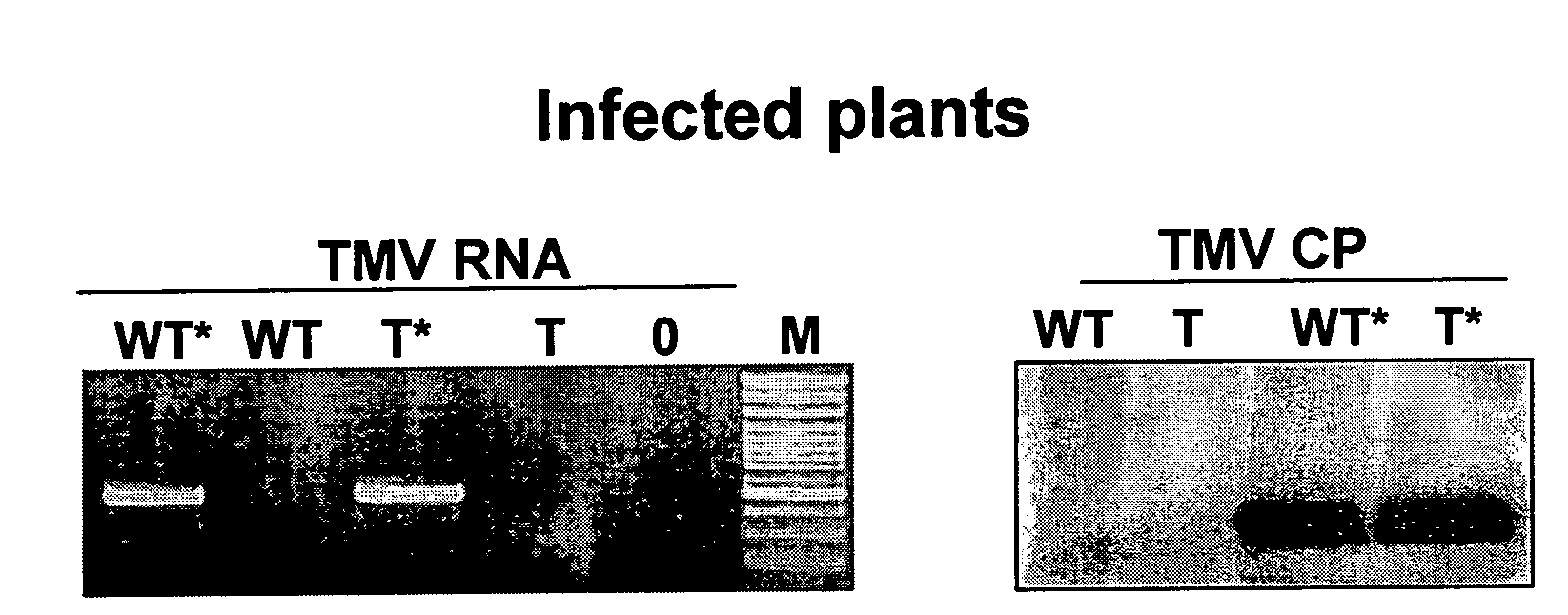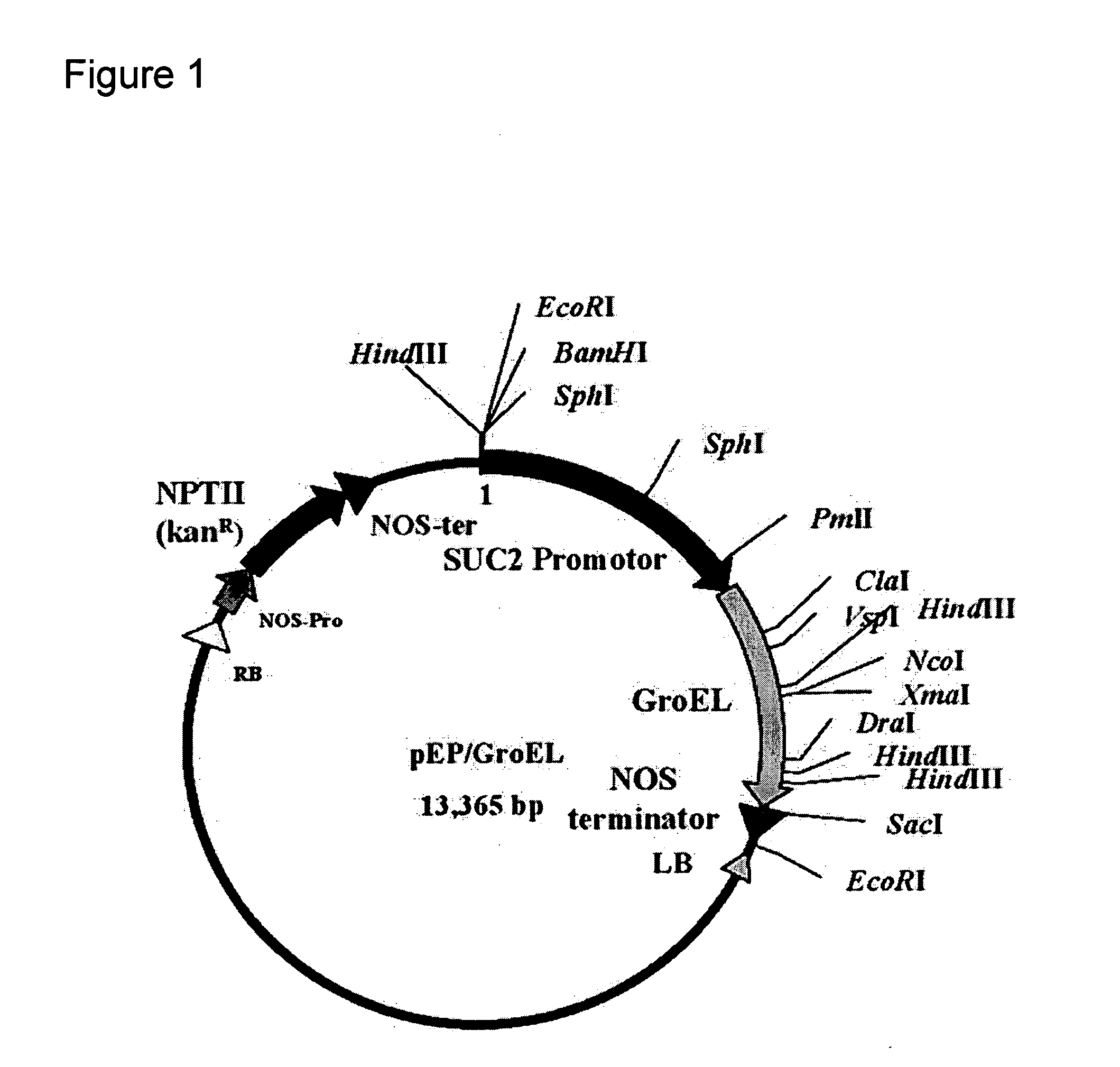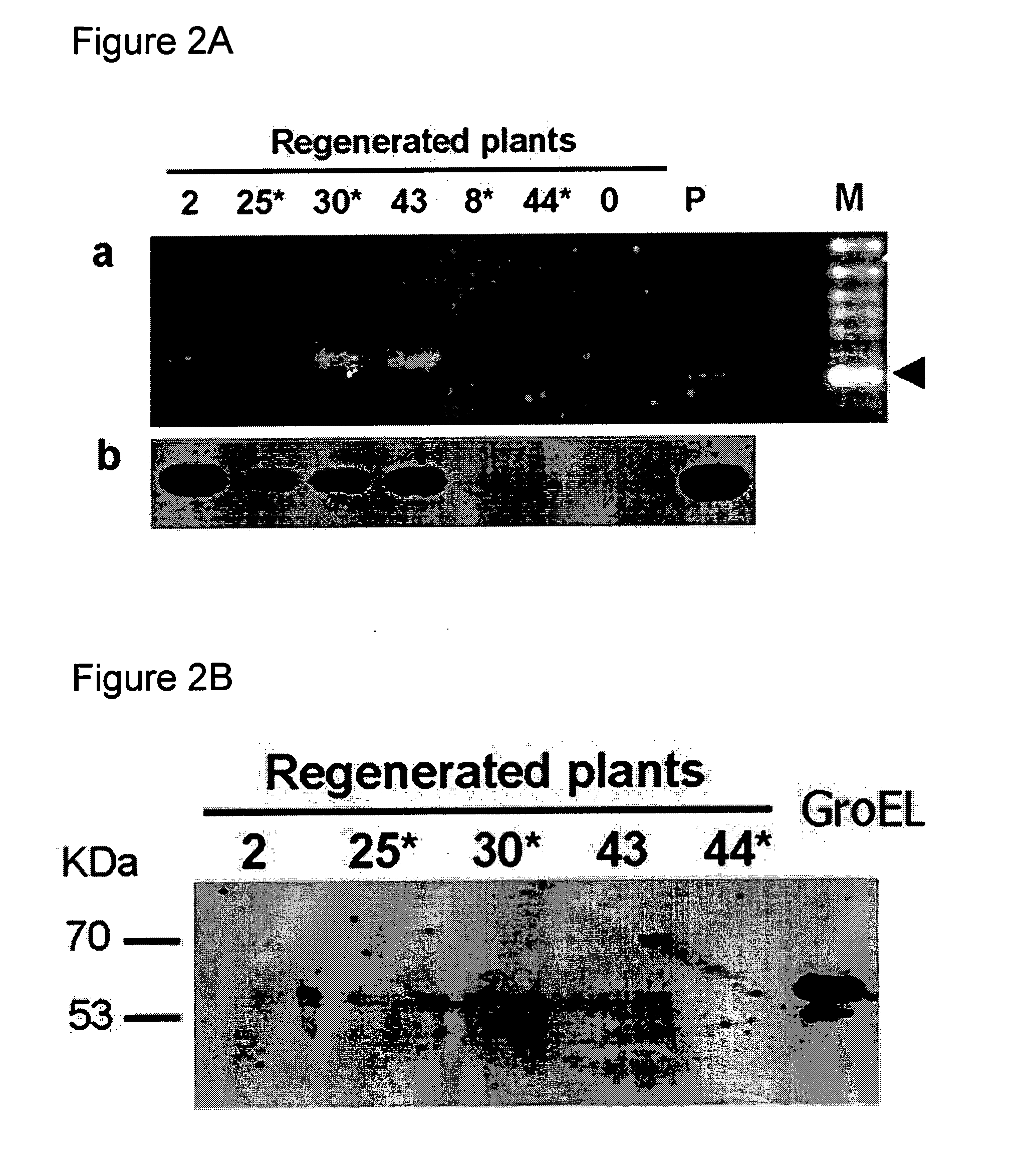Virus tolerant plants and methods of producing same
a virus-tolerant plant and virus-tolerant technology, applied in the field of virus-tolerant plants, can solve the problems of increasing the resultant damage, increasing the loss of agricultural fresh produce all over the world, and the circulative viruses are not immediately available for infection, so as to enhance the tolerance to viruses, limit the symptoms of diseases, and enhance the resistance to viral diseases.
- Summary
- Abstract
- Description
- Claims
- Application Information
AI Technical Summary
Benefits of technology
Problems solved by technology
Method used
Image
Examples
example 1
Transformation and Regeneration of Plants
Tomato Plants (“T0” Generation)
[0144]Two different tomato lines, F1 and MP1, were chosen for this study to avoid genotype-related artifacts. These two genotypes are easy to transform and have high regeneration competence. A gene encoding a GroEL homologue from the whitefly B. tabaci endosymbiotic bacteria was cloned into an Agrobacterium binary vector, under the control of the promoter from the Arabidopsis phloem-specific sucrose transporter gene SUC2 (FIG. 1). The vector was introduced into Agrobacterium. Tomato cotyledons and hypocotyls were co-cultivated with the cells. Eighty nine independent tomato plants were regenerated from cotyledons and hypocotyls: 40 from F1 hypocotyls, 15 from F1 cotyledons, 27 from MP1 hypocotyls and 7 from MP1 cotyledons.
[0145]DNA extracted from each plant was subjected to PCR analysis using GroEL-specific primers as described hereinabove. Transgenic plants yielded the expected 500 base pair (bp) product. Of the...
example 2
Selection of Primary Transformants (“T0” Generation) Expressing GroEL and Tolerant to Whitefly-Mediated TYLCV Inoculation
[0147]In order to select those transgenic plants that express GroEL, protein extracts from the leaves and the stems of plants of the “T0” generation, were subjected to Western blot analysis. FIG. 2B shows the results for a selected number of plants, regenerated from cotyledons and hypocotyls of the F1 and MP1 genotypes. Transgenic plants 2, 25, 30 and 43 expressed the GroEL protein while the regenerated non-transgenic plant 44 did not. The GroEL protein was immunolocalized in tissue prints of stem sections and of young leaves, using an anti-GroEL antibody. Examination of the prints (FIG. 2C) indicated that GroEL was localized mainly in the inner phloem tissue of the GroEL PCR-positive transgenic tomato plants 30 and 43, but was not detected in non-transgenic tomato plant 44 regenerated from the same transformation events. The results obtained by the tissue prints ...
example 3
Production of the “T1” Transgenic Generation: Integrity of the GroEL Gene Construct, Expression of the GroEL Protein and Resistance to TYLCV
[0149]The 24 primary transformed “T0” plants were self-pollinated. Twenty seeds from nine randomly selected “T0” plants were germinated in soil. All the 20 “T1” progenies (named ‘A’ to ‘T’) from each of the nine primary “T0” transformants were analyzed for the presence of the GroEL gene by PCR. Approximately 65 to 70% of the plants, regardless of the identity of the mother plant, contained amplifiable GroEL DNA, indicating that this generation segregated for the GroEL gene. Those plants that contained GroEL DNA were further investigated.
[0150]The integrity of the GroEL gene, flanked by the phloem-specific promoter and the NOS terminator, in the PCR-positive GroEL transgenic plants was confirmed by Southern blot hybridization of EcoRI-digested plant DNA (two EcoRI restriction sites encompass the SUC2-GroEL-NOS DNA, see FIG. 1). FIG. 4A shows that...
PUM
| Property | Measurement | Unit |
|---|---|---|
| Fraction | aaaaa | aaaaa |
| Length | aaaaa | aaaaa |
| Isoelectric point | aaaaa | aaaaa |
Abstract
Description
Claims
Application Information
 Login to View More
Login to View More - R&D
- Intellectual Property
- Life Sciences
- Materials
- Tech Scout
- Unparalleled Data Quality
- Higher Quality Content
- 60% Fewer Hallucinations
Browse by: Latest US Patents, China's latest patents, Technical Efficacy Thesaurus, Application Domain, Technology Topic, Popular Technical Reports.
© 2025 PatSnap. All rights reserved.Legal|Privacy policy|Modern Slavery Act Transparency Statement|Sitemap|About US| Contact US: help@patsnap.com



